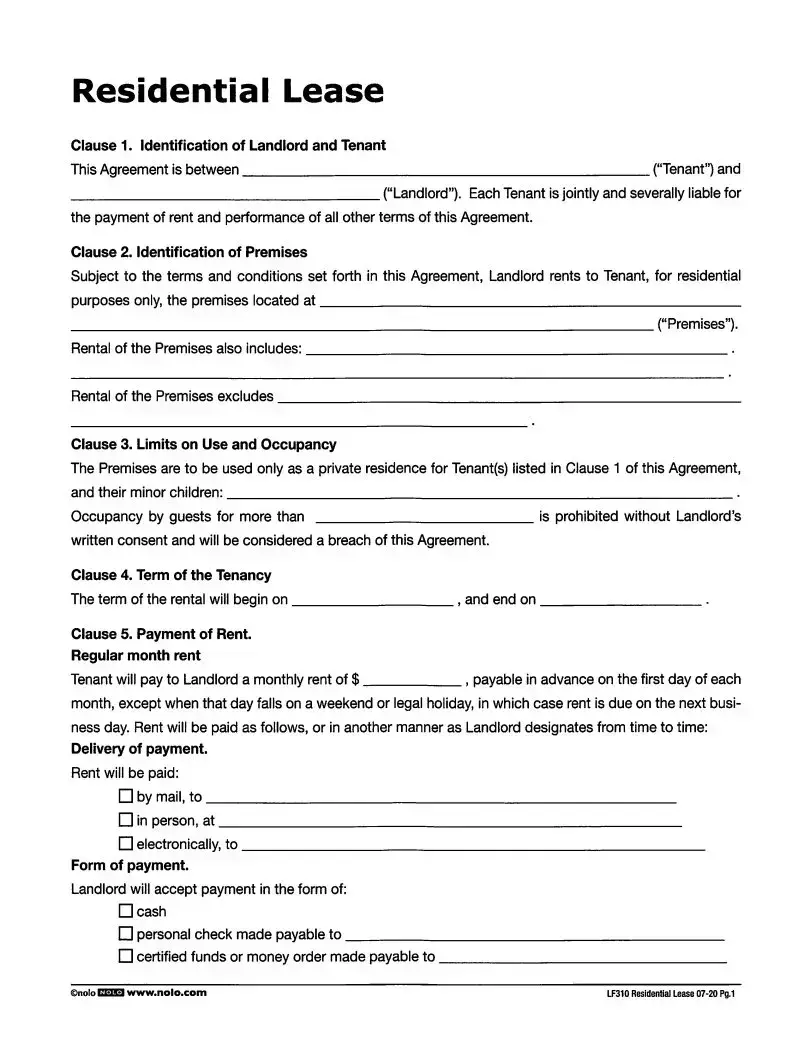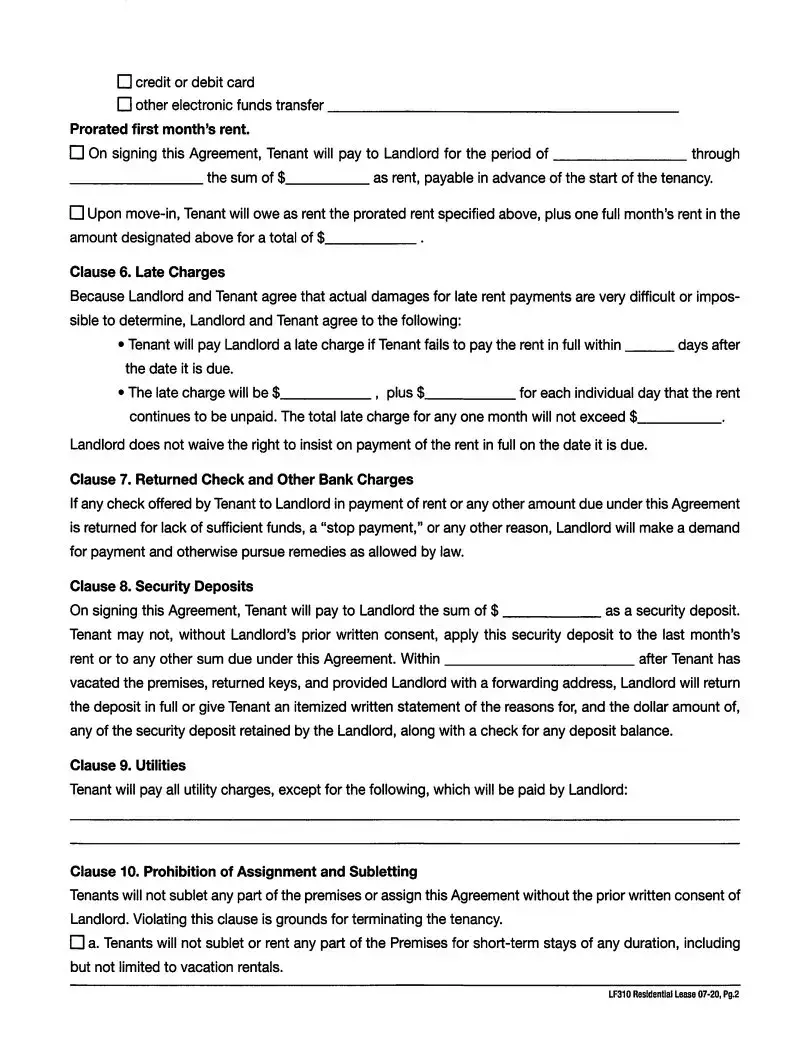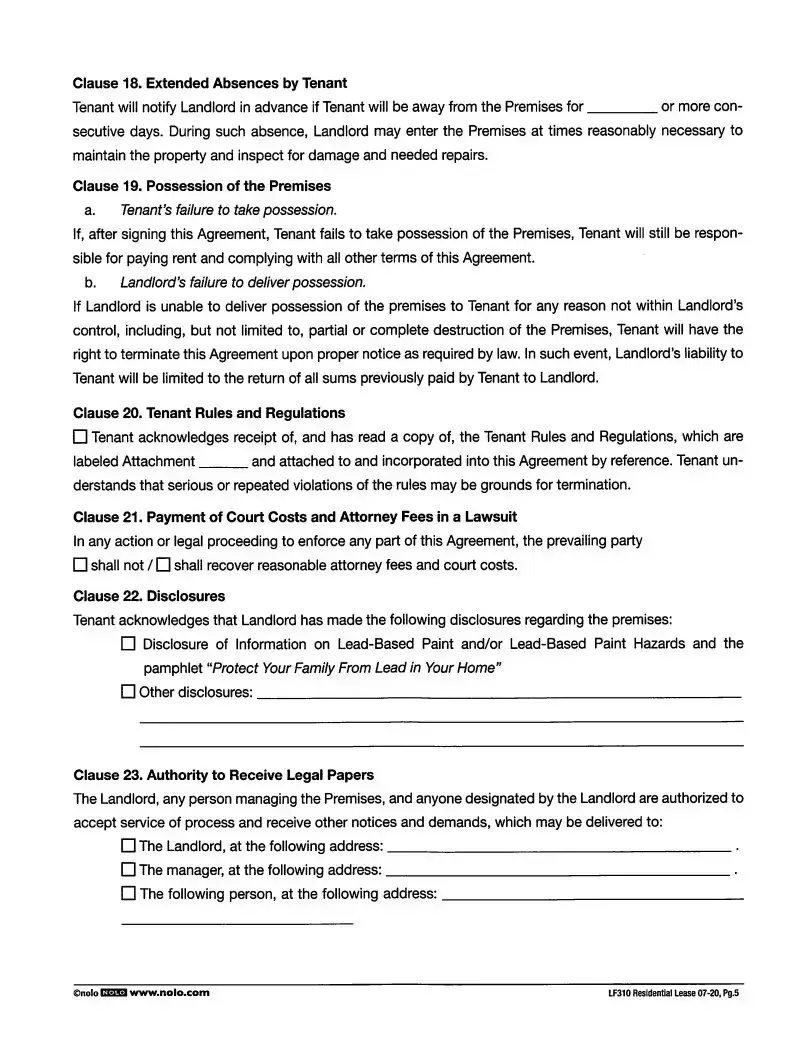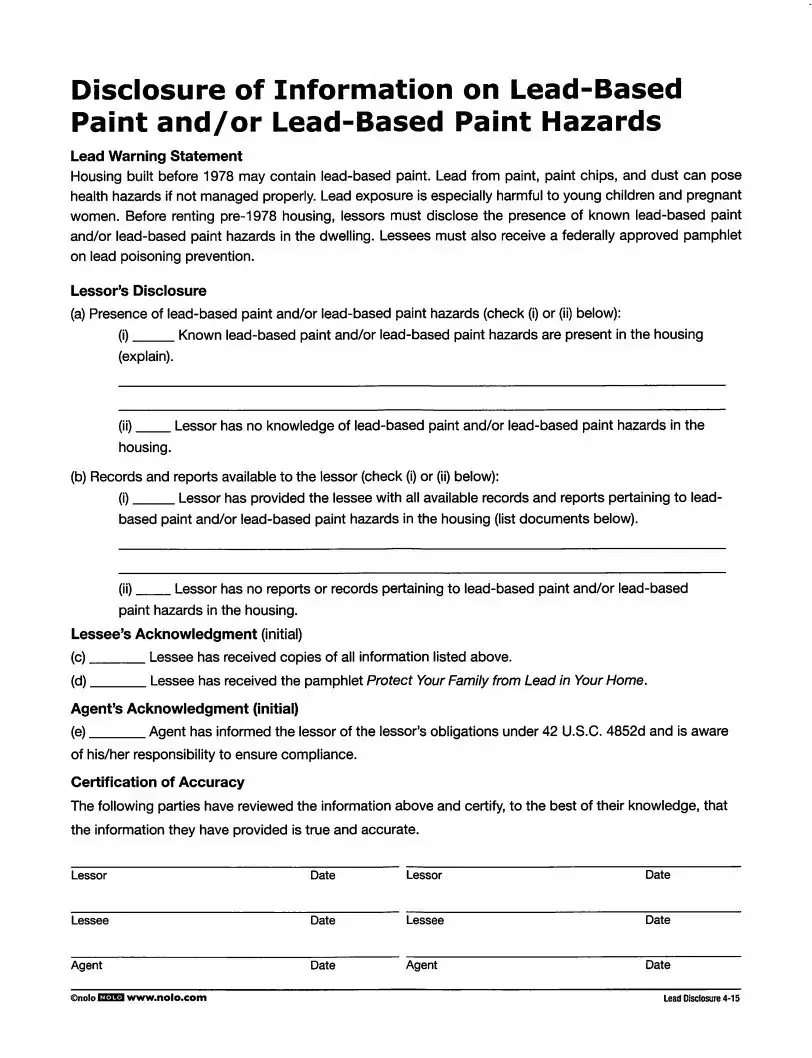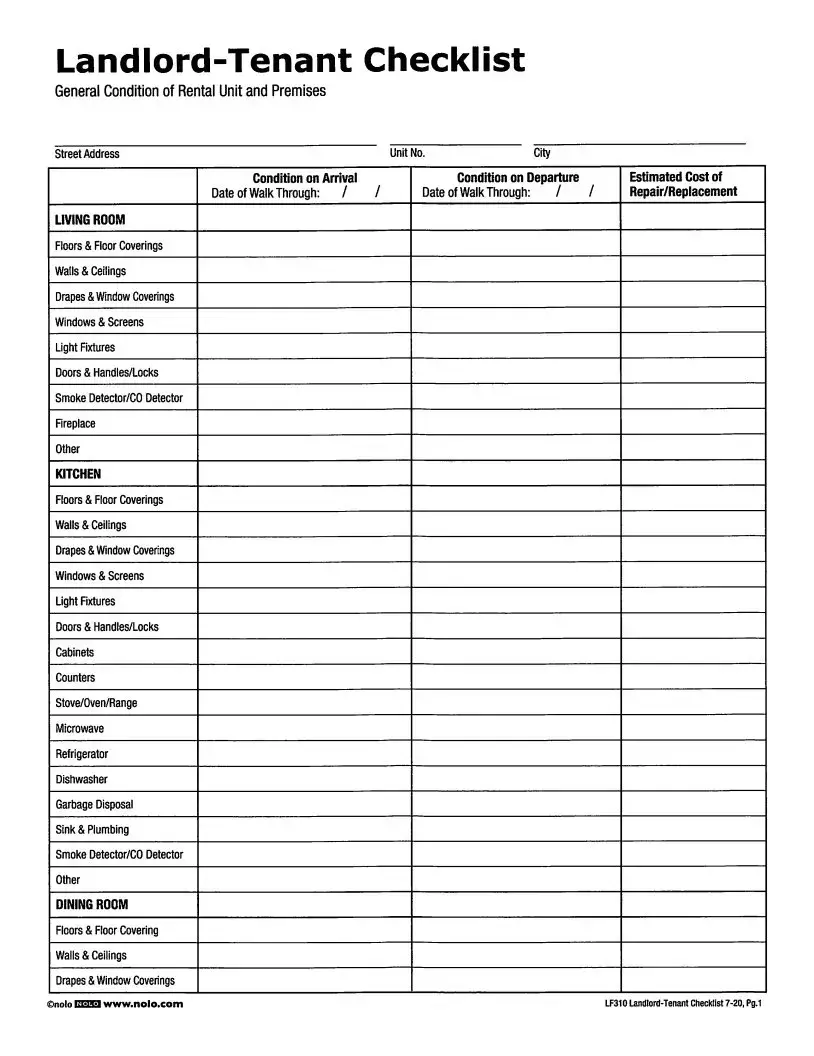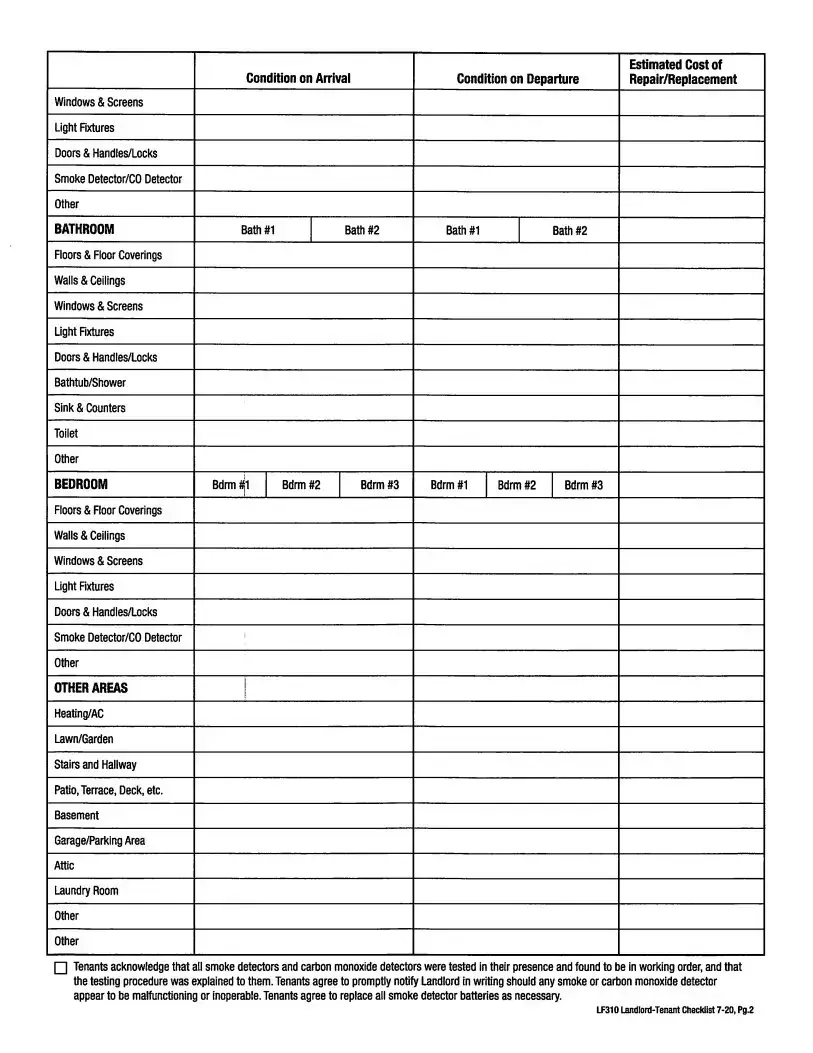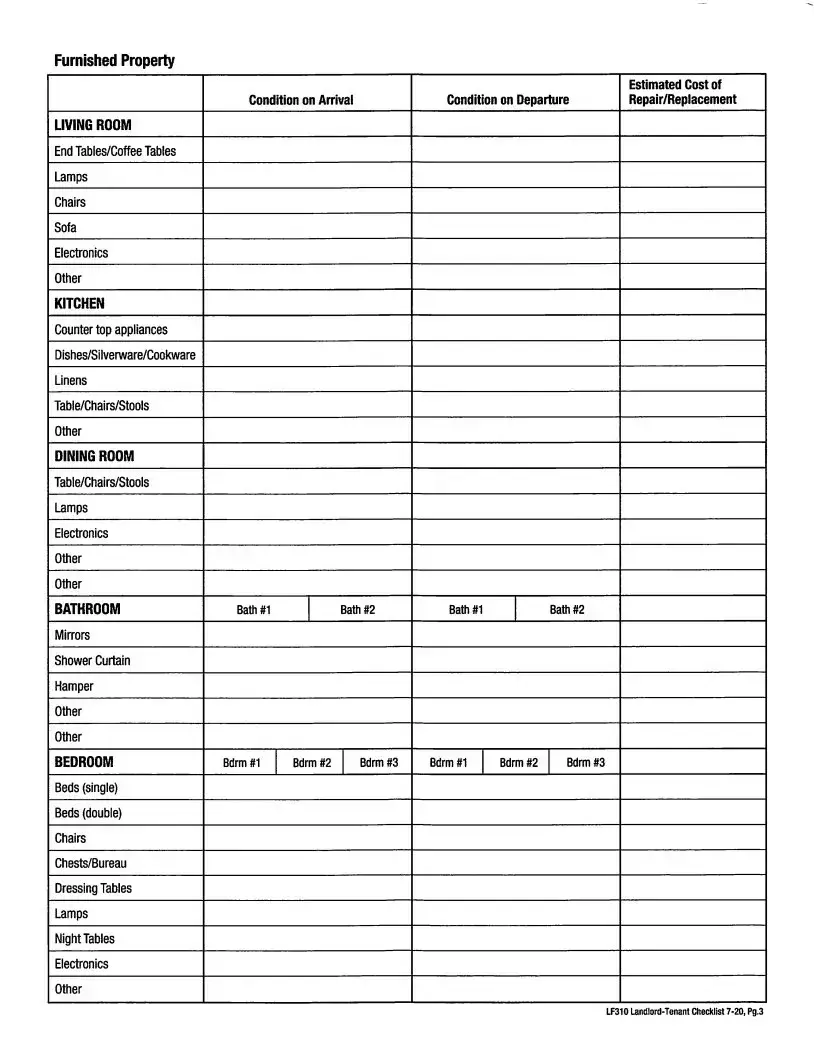Filling out the LF310 Residential Lease form requires attention to detail. One common mistake is failing to clearly identify both the landlord and tenant in Clause 1. It's essential to ensure that the names entered are accurate and complete. If this basic information is incorrect or missing, it can lead to confusion concerning responsibilities later on.
Another frequent error occurs in Clause 2, where tenants often neglect to specify the exact address of the premises being rented. Failing to provide a complete address can cause disputes about the location and terms of the lease. It’s also important to indicate any exclusions related to what is included in the rental.
In Clause 3, tenants might mistakenly assume that any guests can stay indefinitely. The agreement specifies that occupancy by guests without written consent is prohibited. Ignoring this stipulation can lead to a breach of contract, potentially resulting in serious consequences.
Clause 5 addresses the payment of rent, and many tenants overlook the section that explains how to deliver payment. Whether payments will be made by mail or electronically must be clearly stated. Miscommunication about this aspect can delay payments and lead to late fees.
A common oversight in the same clause involves the monthly rent amount. Tenants need to double-check that they have written the correct figures in all related sections. A discrepancy between the stated rent and the agreed amount can result in disputes or unintentional late fees.
When it comes to late charges described in Clause 6, some tenants forget to document how many days they have before incurring such charges. Clearly understanding this timeline helps avoid unnecessary financial penalties.
An important aspect that is often neglected involves the return of security deposits in Clause 8. The timeline for the return of the deposit should include how long the landlord has to return the deposit after the tenant vacates. Incomplete information can lead to misunderstandings about when to expect the deposit back.
Clause 9 mentions utilities; tenants should ensure that they understand which utilities they are responsible for paying. Failing to clarify this can lead to unexpected bills and arguments with landlords over what was agreed upon.
Lastly, the prohibition of assignment and subletting in Clause 10 is often taken lightly. Tenants should fully comprehend that subletting without permission is not just frowned upon—it’s a breach of the lease. Awareness of this rule helps avoid unintentional violations and the subsequent risks of eviction.

